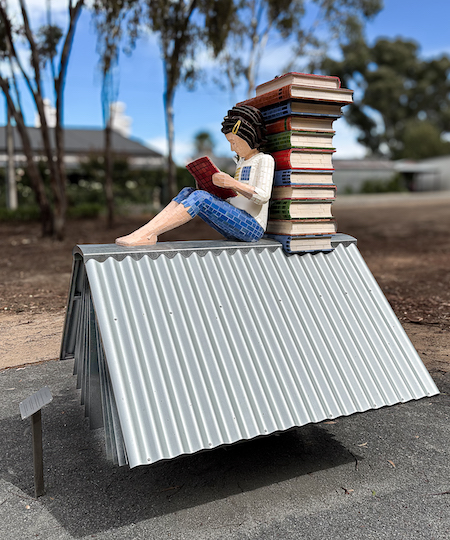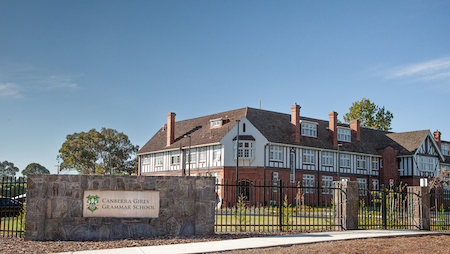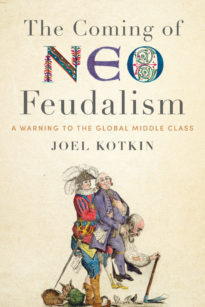Education
How did you learn to read?
Did you start letter-by-letter – C A T , D O G, leading (letters and sounds first, or “phonics”), making sense out of words (words first, or “whole language”) aided by pictures perhaps, or more likely by some combination of means? And what part did teachers play in your learning to read?

The Grattan Institute, in research by Jordana Hunter, Anika Stobart and Amy Haywood, has analyzed NAPLAN and other data on children’s reading, noting that according to criteria defined by the Australian Curriculum Assessment and Reporting Authority, one in three Australian students in Years 3, 7 and 9 are not proficient in reading at levels classified appropriate for those ages. Unsurprisingly, they find that students from non-metropolitan regions, and children from disadvantaged backgrounds generally, are behind children from more privileged backgrounds.
Their report – The reading guarantee: how to give every child the best chance of success – goes on to make a number of uncontentious recommendations for governments and other bodies responsible for school education. Most of these recommendations are uncontentious: they include allocating resources for evidence-based research, providing more support for teachers with curriculum materials, and monitoring children’s reading progress, with attention to clearly-stated goals.
One, which could be contentious, is about the specific way early reading skills should be developed:
The evidence is clear: there should be a strong focus on phonics-based decoding skills in the early years.
To ensure this happens there should be “a nationally consistent Year 1 Phonics Screening Check for all students”.
The issue concerning a choice of “phonics” or “whole language” is contentious among education professionals, some of whom fear that teachers could be forced into a one-size-fits-all model, for which there is a strong push, as indicated in the Grattan article.
An education academic has drawn our attention to an article by Noella Mackenzie and Martina Tassone – Reading research – beyond the media hype – published by the Australian Literacy Educators’ Association. The authors examine the basis on which some education authorities are pushing for a “phonics” approach.
They note the strength of this push:
Recently, there has been a renewed interest in approaches to teaching reading that focus on decoding and synthetic phonics as the answer to the question of how to teach early reading.
They are concerned about wild claims and “dramatic narratives” around children’s reading problems (always good material for tabloids), and they summarize the research on which advocates’ preference for phonics is based.
It appears that in most aspects the research was conducted to high standards, but it was conducted on children who had known reading difficulties. It seemed to be more like research on rectifying a problem that had become manifest among a sub-population of children. That does not necessarily point to what is best for all children.
Expanding STEM: an opportunity and a setback
Writing in The Conversation a group of researchers from Queensland universities have written about the low participation of indigenous Australians in STEM courses and subjects (science, technology, engineering and math).
Their research revealed that indigenous Australians have low participation in STEM courses, resulting from a lack of awareness, rather than a lack of interest. Once the offerings of STEM were explained, 83 percent of participants in their survey saw a clear connection between STEM and indigenous culture.
Their work was not just about raising awareness about STEM courses and encouraging indigenous students to enrol. It was also about the possibilities of incorporating indigenous knowledge -- astronomy, weather, climate, land management, medicinal plants, ecosystems, Australian animals and plants – into the body of STEM knowledge.
That’s an advance for STEM. A setback has been the New South Wales government’s reversal of a requirement that mathematics would be compulsory for students in Years 11 and 12.
In 2019 the previous Coalition state government announced that from 2016 mathematics would be compulsory in senior years, but the present government has dropped that requirement. The reasons justifying that abandonment, according to those the ABC’s Sam Nichols quotes in his article about the decision, seem to be about the shortage of mathematics teachers, and providing choice to students, the latter argument advanced by the independent schools lobby.
If the decision is about teacher availability that’s understandable, but one might have expected the government to announce a one- or two- year deferral of the requirement accompanied by a fast-track plan for filling the shortage.
If it’s about choice, does that mean the education authorities are relaxed about letting 15 and 16 year-olds decide to take an easy and unchallenging path in their last two years at high schools? The “choice” they make at that age could lead them to a life of poorly-paid employment, expensive financial decisions, and political choices that entrench their poverty. Even though many may not go on to use Year 12 mathematics very much, the way of thinking in mathematics hones one’s skills in reasoning and analysis. Right-wing populists peddling bad economic policy thrive in an environment where the voting public lacks these skills.
The Nobel-Prize winning philosopher Thomas Schelling dispelled the notion that restricting choice necessarily restricts our liberty. He pointed out that ten or twenty years down the track, I might be grateful that my mother made me eat spinach, that the Commonwealth government forced me to put 12 percent of my pay into superannuation, and that the New South Wales Education Standards Authority required me to learn differential calculus – all setting me up for a life in which my choices were to be greatly expanded, compared with the more restricted life I would have spent without the benefit of that early paternalism.
Cranbrook – it’s about many issues
The ABC’s revelations about conduct at Sydney’s elite Cranbrook School, the subsequent resignation of the Headmaster Nicholas Sampson, and a flow of further allegations, have provided plenty of engaging content for those who enjoy high quality investigative journalism.
So shocking is some of the alleged behavior of staff and schoolboys that it is easy to see only the obvious stories about harassment and cover-up, and that we might overlook some other important issues about the way young people are prepared for adult life.

How can schools go fully co-ed if the girl’s schools hang out?
One is about gender-separated education. The ABC’s Claudia Long and Emily Laurence have posted an article With more single-sex schools going co-ed, what is the evidence for gender-segregated education?, including links to research debunking the idea that girls do better academically in single-sex schools. It is possible that the reason some private boys’ schools hold out is that they reap benefits not in academic terms, but in forming old-school-tie relationships that will form tight male networks in adult life.
To its credit, Cranbrook has plans to go co-ed, and its administrators seem to be sensitive to the difficulties to be faced by the first cohort of girls, whose experiences may have much in common with those young Afro-Americans who pioneered racial desegregation 70 years ago. Cranbrook’s parents seem to be more enlightened than those of another exclusive school, Newington College, whose social evolution seems to have been arrested at some primitive level.
The cover-up allegations concerning Cranbrook are not only about the staff. There is also a serious allegation that one boy raped another, and that the victim made no attempt to inform school authorities or the police. This is about the “don’t-dob-in” norm, which is not confined to private schools. It has some benefits in helping children avoid developing a victim mentality. But it also sows the seeds of non-disclosure agreements, and dysfunctional loyalty to corrupt institutions. Many of the ABC’s revelations are about the accountability of private schools, pampered with tax breaks, towards the wider community. Notions of eliteness and exclusivity foster the idea that some institutions are above reproach.
And of course, there is the much bigger question about policies that allow and encourage the development of a private school system alongside a public system – a system heading towards the tipping point where its onward path will be as a basic-quality safety net. In these revelations about one private school there is not only an understandable insight into class division, but also an insight into a model of school education that is outside established conventions. That model is a corporate one, with all the trappings of high executive salaries, marketing managers and a focus on the corporation rather than on those it serves.
How to close the urban-bush education gap
The further a child lives from a capital city, the less likely is that child to finish Year 12, and that child is even less likely to go on to post-school technical or university education.
This gap is addressed by Adrian Piccoli, former Minister of Education in the New South Wales Government, who delivered the 2023 Henry Parkes Oration – in Tenterfield of course.
You can watch the whole 110-minute session including Q&A on the Foundation’s website, you can read his speech as prepared, also on the Foundation’s website, or you can listen to a 25-minute extract on the ABC’s Big Ideas program, The education gap between rural and metropolitan Australia is costing us billions, covering his main message.
Piccoli reminds us that remoteness is just one of five conditions contributing to disparities in education outcomes, the others being the socio-economic status (SES) of the student’s family and community, indigeneity, English language proficiency, and disability. Most of these other factors are relevant in remote schools, but his focus is on the contribution of remoteness.
He describes the urban-rural disparities in education engagement, attendance, attainment, and progress to higher education, noting that these disparities have changed little over time. One less well-known finding is that when rural students take a gap from education, such as a year for work or travel, they are much less likely than their urban counterparts to return to schooling.
He goes on to some of the reasons for these disparities, including but not over-emphasizing the contribution made by teachers. The SES of parents counts, particularly of students’ mothers. There are physical determinants, such as the distance students must travel to high school, the quality of internet, and the limited range of subjects in small schools. Then there are the students’ living conditions: do they have somewhere to study, do they arrive at school having had a good night’s sleep, or have they been wandering the streets?
He concludes with descriptions of research grounded in behavioral economics, involving incentives for children and parents (including monetary incentives for children). He mentions the often-made call to provide more financial incentives for teachers to move to the bush, but notes that there are many factors other than money that influence teachers’ locational preferences.
In that same conclusion he provides an estimate of the benefit of closing the urban-bust educational gap. Just closing it by a third would contribute to a $18.5 billion or 1.1 percent rise in GDP. That’s a conservative estimate, because it’s simply based on the better pay that more educated people would enjoy: it doesn’t include the surplus value of that production or the benefits in lower dependence on social security transfers.
Why are Americans becoming more stupid?
That’s not my headline. It’s Joel Kotkin’s in his Unherd article, where he laments what he calls “progressive indoctrination” in American schools and universities. His tone is alarmist. For example he writes:
California’s K-12 system, for instance, fails to educate the majority of its students: less than half meet national standards for literacy, while only one-third do for math. The state’s solution is basically to lower standards; well before students possess knowledge of the basics and the scientific method, the math curricula includes an emphasis on “social justice” and mandates programmes steeped in climate catastrophism.
Kotkin’s sensationalism and his loose use of the word “progressive” may lead to a visceral reaction against his message from those on the “left”. That would be no more rational than climate change deniers using the irresponsible behavior of Extinction Rebellion as an excuse to dismiss the science of climate change.
Progressives may find themselves more in tune with Kotkin’s basic message, where he writes about the social division resulting from the high cost of university education, and where he writes that:
… the educational system has become more elitist and less connected to the rest of society. We are a long way from the massive expansion of higher education during the mid-20th century, largely through the GI Bill and later the National Defense Education Act, as well as post-war efforts to expand universities in the UK and across Europe.

He reports that employers find young workers lack the skills to think critically. That’s not the message one would hear from a defender of the populist right, who are threatened by independent thinkers.
Kotkin’s ideas on education are in line with his 2020 work The coming of neo feudalism. It’s a well-argued defence of the traditional socialist or social-democratic principles that shaped the economies of postwar democracies to the benefit of the working classes and the middle class – although he doesn’t seem able to bring himself to use the word “socialist”. He believes that the left, having lost sight of those basic distributive principles, is unintentionally colluding with the far right in ushering in a new feudalism – economies with a handful of oligarchs, a few hangers-on in the administrative elite, and most people in the ranks of the lumpenproletariat – another word he could have used.